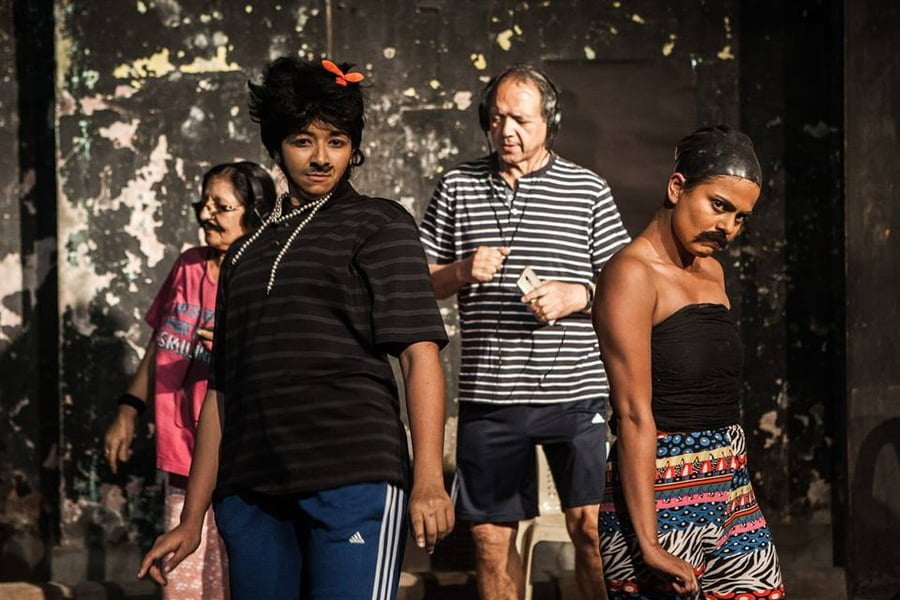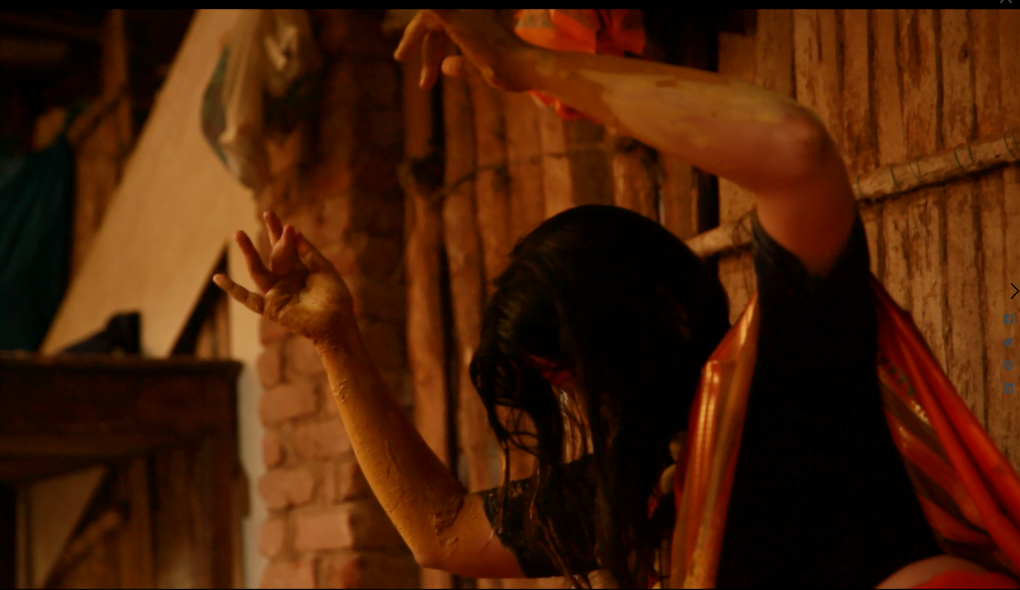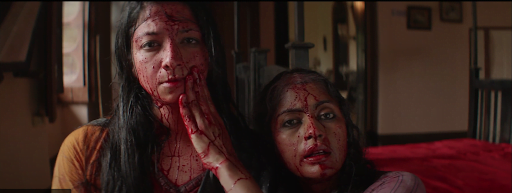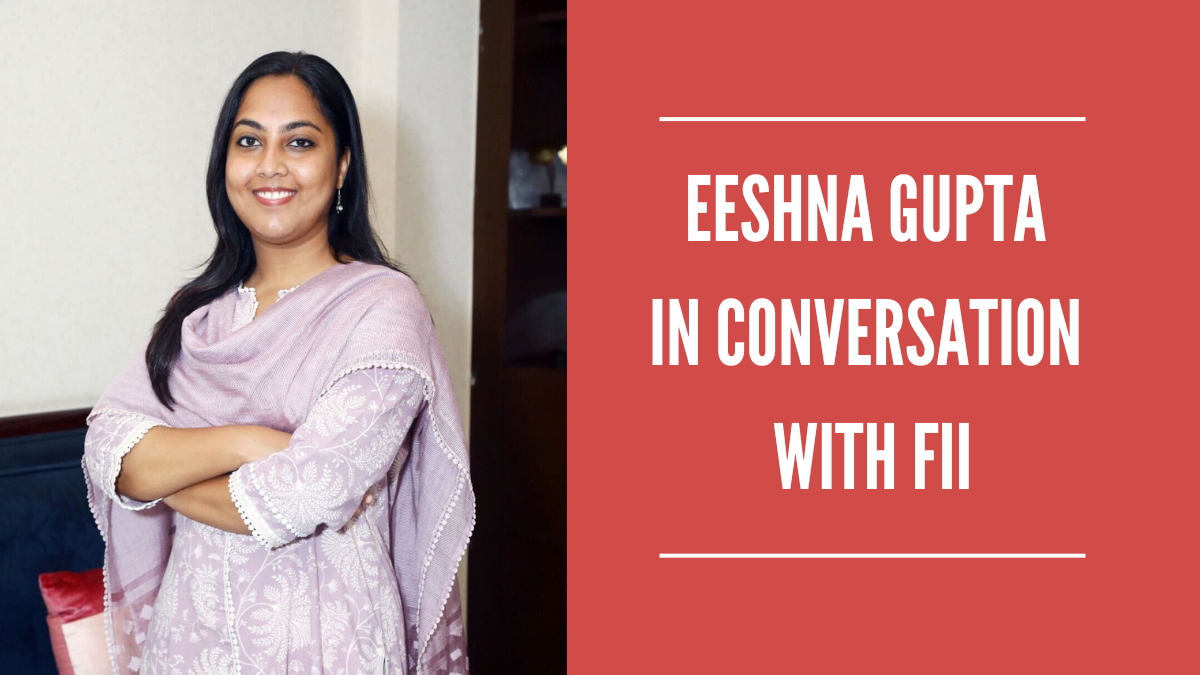Nihaarika Negi is an artist who cannot be put into a single box. To call her merely a filmmaker, actor, producer, storyteller or screenwriter (all of which she is) is unfaithful to what she seems to bring to her work—which I am unable to name, but is larger than the sum of the roles that she plays in each creation. A multi-award winning artist, her art manages to transcend the boundaries of any categorisation that attempts to confine them, or her. She, along with her team, recently won an award in Paris for one of her projects that was covered by Variety magazine here. Through this deeply insightful interview with her, we explore the themes, ideas and motivations behind her kaleidoscope of a catalogue raisonné.
A multi-award winning artist, her art manages to transcend the boundaries of any categorisation that attempts to confine them, or her. Through this deeply insightful interview with her, we explore the themes, ideas and motivations behind her kaleidoscope of a catalogue raisonné.

- Hamsadhwani Alagarsamy: Your work is mind-blowingly versatile across mediums, themes and the roles you play in their creation. From short films, performance art, interactive VR art, to full-length feature films, and from the consumption of fruits to a surrealistic engagement with a serial killer’s mind space, your work covers it all. You have also been part of them in different capacities, from an actor to a screenwriter. What is art to you? What is your relationship with it?
Nihaarika Negi: As an interdisciplinary artist, whose work is rooted in embodied meditative performance—for me, art is the act of making the invisible, visible. It is an excavation that occurs at the site of the body, in the pursuit of a certain ancestral knowing that emerges through the earth and rises up through the soles of your feet—compelling you to use craft, form, structure in a way that allows a transmission of this feeling/experience to occur in the bodies of those encountering the work.
Art then is an act of osmosis—that allows the ephemeral, the uncertain, the hard-to-talk-about-things to take root in our navels and perhaps grow their own feet.
- Hamsadhwani Alagarsamy: Apart from the skilful, mesmerising visuals in your work, there is also a distinct, compelling role that sound plays. Is that incidental, or something you work towards in your work?
Nihaarika Negi: Definitely the latter.
Central to my practice is the idea that our breath and body is the conduit through with dream and creative impulse flows. It is a pathway through which we can transcend our daily realities and be connected with other extra-daily ways of seeing and being.
Taking from that, my work usually situates audiences inside the inner worlds of characters. Sound then, rather than being an accompaniment to underlining the actuality of the visuals, becomes about communicating the other realities that simultaneously exist for us and the characters.

The realities of physically being present in one space, while mentally and emotionally traversing other dimensions—dimensions of our remembered forgettings, our viscera, our failed hopes and longings. What could a soundscape that concurrently speaks to all this include? How could it be composed in a way—that in conjunction with the moving image—such that it creates new meanings that further heighten the thematic resonance of the work?
Those are some positions of questioning that lead me down exploratory paths with each piece.
- Hamsadhwani Alagarsamy: There is an abundance of nuance in your work, so much so that new ones become apparent with each viewing of your work. Have there been times when you have seen nuances in your work that you did not consciously put in there, but which came to exist simply as a consequence of a streamlined and honest portrayal of your theme and story?
Nihaarika Negi: Oh yes. For sure and I think in part that is due to the open-hearted generosity of my artistic collaborators.
I make work through process-based collaborative co-creation and I think nuance often occurs when we, as an ensemble, have a deep collective awareness of the transitory spaces in-between things. For it is in those spaces—between the end of one thought and the birth of another—that we can allow something truly memorable and unexpected to happen. Making work for me, then, is often about facilitating an environment where that can occur.
We enter the process by creating limitations. The limitations of our environments, of the story, of time, of resources, of ourselves. All of this enables us to create a very specific framework within which we can operate. In constraining our choices in this way, we create space for our imaginations to open up in unexplored directions.
It creates a structure—that emerges from our own and the group’s intuition as a point-of-departure. Within this structure, we all have the agency to interpret directions in a manner that enriches the whole. We have the freedom to improvise, to put ourselves at stake and to tempt failure over and over again. It is in those moments that something surprising and magical can occur—thereby allowing us to make a piece that is fluid, layered with details and open to multiple interpretations and repeat viewings, even for its creators.

That is always the hope and forever the attempt.
As an interdisciplinary artist, whose work is rooted in embodied meditative performance—for me, art is the act of making the invisible, visible. It is an excavation that occurs at the site of the body, in the pursuit of a certain ancestral knowing that emerges through the earth and rises up through the soles of your feet—compelling you to use craft, form, structure in a way that allows a transmission of this feeling/experience to occur in the bodies of those encountering the work.
- Hamsadhwani Alagarsamy: Do you make art for the sake of art? Do you, consciously or subconsciously cater it to better fit your potential audience? If so, has that been restrictive or enriching?
Nihaarika Negi: Perhaps in the early days, when I was still trying to uncover my reasons for creating—that, that might have been the case. But for a long time now, art for me has been a way of building community, for making space for us to talk about things in a manner that might not be possible in the everyday. It’s about reimagining the old hierarchical power-structures inherent in film and theatre-making and creating new ways of collaborating that honours all the voices in the room. It is about celebrating those voices within ourselves and our environments that have been marginalized and rendered invisible. For I believe that it is in embracing, without shame, all those parts of ourselves that have been denied for so long that we can truly reclaim authentic selves. And I make work to speak those untended parts that are hankering for tenderness. Those parts that lie within all of us and really just want to be seen.
It is a process of acceptance that is personal and universal at the same time and inherently enriching.
- Hamsadhwani Alagarsamy: Your work has an outlandish beauty to it – that is owed, I believe, as much to your mastery of aesthetics as it is to your willingness to let things be as they are, and hence sometimes ‘ugly’. What is your take on the same?
Nihaarika Negi: It comes from a desire to reframe a patriarchal gaze that seeks to reduce the feminine experience into a shadow of itself.
I see beauty not as a noun but as a verb. It is the act of surrendering to something that reveals your innermost truth. This truth can be wild, and untamed or tentative and fragile. It is a considered act of gleaning into the nature of the human condition, with all its perceived ugliness and emerging from that experience somehow transformed, if only momentarily.
Also read: Visual Artist Dharini Verma — “It Feels As If I’ve Been…
- Hamsadhwani Alagarsamy: Power seems to be a consistent theme that is engaged within your work, be it in the sphere of gender, sexual identity, or class. According to you, what role does your own identity play in your portrayal of the same? Further, how has your identity affected your existence and functioning in the field and industry of art?
Nihaarika Negi: As a woman of a part-tribal identity, making work as an interdisciplinary artist in India and internationally, I have been compelled to recognize and appreciate that power, in all its forms, is the language on which the world operates. It’s a catch-22, where not knowing the right words often keeps you on the periphery and learning this tongue for the sake of your own, can strip you off your agency. But there lies great freedom in that knowledge and also the potential for great storytelling.
For me, drama and humor lies in the shifts of power between people, ideas and things. It lies in desire interrupted and in the impossibility of one’s reach.
I believe that one of the ways for us to reclaim our lost power, is to accept and celebrate all the ways in which we do not fit. In revealing ourselves in this manner, we find the courage to carry on and encounter other such people along the way, who make the journey worth taking. Ultimately, that’s what it comes down to. For it was in embracing my peculiarities and differences – that I was really able to find a community of life-long collaborators, without whom nothing could be possible.
- Hamsadhwani Alagarsamy: Tell us a bit about your current projects, and the themes, forms, and roles you look forward to working with in the future.
Nihaarika Negi: There are three projects that I am currently developing as a writer/director/producer/performer—that I am quite proud of—because they in many ways bring together the different aspects of my artistic practice:
FERAL (US) is an English-language feature about two Indian maidservants who transgress against their British Madame, dismantling the old power structures and reclaiming their lost, wild, mystical selves. It is a darkly comic drama with elements of horror and magical realism that explores class, race and colonial trauma as it presents itself through the bodies of women.
The project was recently awarded a Sundance Institute + Women In Film Financing Fellowship and we are looking forward to making the film soon, through my production company Autotelic Pictures.
A CITY OF FOXES (US/France), is a tender and intimate approach to immersive storytelling through VR that allows the audience to have an interactive encounter with a philosophical fox that questions the notions of companionship and loss. This is a multi-phase, multi-year project that is at the intersection of entertainment, technology and health and is about having a conversation with someone who has been ‘othered.’
The work has been supported by the Venice Film Festival Development Labs, the Venice Film Festival’s Gap Financing Market (Italy), New Images XR Financing Market, American Center for Art and Culture (Paris), The Brick and the FACE Foundation (US). Made in collaboration with Tamanoir Immersive Studio (France) – we’ve recently received Development Funding from the French Ministry of Culture – CNC, and are excited to start work on the project.
Also read: Shilok Mukkati On Queer Literature, Art And Activism In India
SOME ASIAN COUNTRY (UK/India): is a digital series/ live performance about two irascible pandas who explore their exoticized ancestries through the only language they know – that of their colonisers. It is a satirical piece that seeks to open a rigorous dialogue about the intersection of art, race and popular culture and the often unfathomable effect that has on how we see ourselves. The work is a UK Arts Council-supported project and I am co-creating it with my collaborator, Shakera Rose Carter.
You can find Nihaarika on her website, Instagram and Facebook.
Here are two online streaming links for her films:
- The Housemaids (Short)
- The Threshold (Feature)
Featured Image Source: Feminism In India
About the author(s)
Hamsadhwani is a law student and anti-caste socialist feminist. Abolish the conditions that produce the prison.




